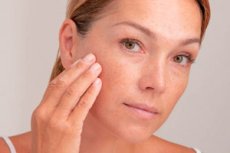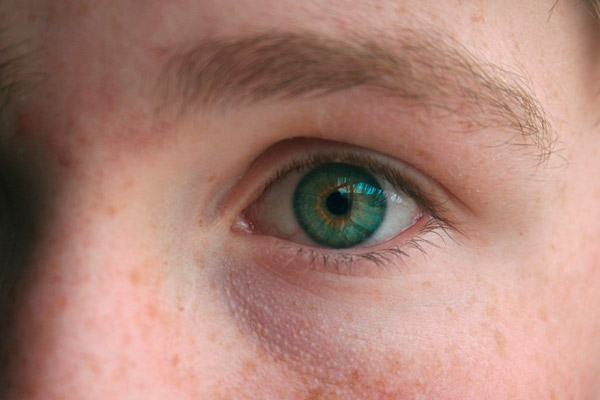Pigment spots on the face
Last reviewed: 25.11.2025

All iLive content is medically reviewed or fact checked to ensure as much factual accuracy as possible.
We have strict sourcing guidelines and only link to reputable media sites, academic research institutions and, whenever possible, medically peer reviewed studies. Note that the numbers in parentheses ([1], [2], etc.) are clickable links to these studies.
If you feel that any of our content is inaccurate, out-of-date, or otherwise questionable, please select it and press Ctrl + Enter.

Pigment spots on the face are a phenomenon that is unpleasant not only from an aesthetic point of view. All pigmented areas of the skin may indicate possible problems in the functioning of organs and systems. Of course, pigmentation can be associated with natural physiological changes in the body, for example, with pregnancy. However, many pigmented areas of the face are a signal of liver disease, skin disease, hormonal imbalances. The desire to get rid of pigmentation without finding out its causes is, at the very least, unreasonable, because it is the same as destroying a coded letter with important information on which health in general depends.
Causes age spots on my face
Pigment spots on the face do not appear without reason; the culprit of the disruption of the uniform skin tone is considered to be a special pigment – melanin.
What is melanin and what can pigment spots on the face indicate?
Melanin is a coloring pigment that is produced in the deepest, most distant layers of the dermis (basal). Melanin is a product of special cells - melanocytes, which not only produce pigment, but also actively push it into the upper layers of the skin. The thyroid gland, together with the pituitary gland and glands that produce sex hormones, are responsible for the quantity and quality of melanin. Thus, any color change in the skin of the face may indicate changes in these organs. Pregnancy is manifested by characteristic spots - chloasma, indicating a hormonal imbalance, characteristic spots on the cheeks closer to the neck indicate a liver dysfunction. Oversaturation of the upper layers of the skin with melanin is called hyperpigmentation. A decrease in melanin production is called hypopigmentation. Dyschromia - a change in skin color is characteristic not only of the face, melanin protects the skin of the entire body, in addition, it is part of the hair, internal organs and even a part of the brain called the black substance. If melanin synthesis is disrupted, this is a direct indication of a number of serious diseases - from pathology of the nervous and mental system (phenylketonuria) to Parkinson's disease. Statistics say that the less melanin in the skin, the more vulnerable the human body is to diseases, in this sense, people with a rare hereditary factor - tyrosine-negative albinism - are first on the list.
Reasons why pigment spots may appear on the face:
- Genetic, hereditary factor. Genetic predisposition to skin pigmentation is typical for people with the first phototype – light skin. Any dose of ultraviolet light for such fair-skinned people is a direct path to pigment spots on the face and body.
- Aggressive exposure to ultraviolet radiation. Violation of the sun exposure regime, especially in the hot summer season, can provoke disruptions in the production of melanin.
- Hormonal dysfunctions, changes in hormonal balance. This may be a natural period of pregnancy, but pigmentation may also be caused by pathology of the ovaries, thyroid gland.
- Age factor. Over time, the skin loses its protective properties, becomes more sensitive to the effects of external factors - solar radiation, and reacts more quickly to natural changes in the functioning of internal organs and systems.
- A compensatory factor when the pigment tries to protect areas of the skin damaged by trauma.
- Chronic liver disease, digestive tract disease. Any pathology in the internal organs is reflected on the face in the literal sense of the word.
Forms
Pigment spots on the face are conventionally grouped into three main groups:
Freckles, which have a beautiful scientific name - ephelides (in Greek - sun spots). These pigment spots on the face are small, scattered not only on the face, but also on the whole body. Most often, ephelides appear on areas of the skin exposed to the sun. Freckles are a characteristic sign of the first phototype, that is, people with white, sensitive skin.

Chloasma is pigmented spots on the face, usually located symmetrically, with a clear outline. This type of pigmentation does not recognize gender, age or racial restrictions. Any hormonal imbalance, be it pregnancy, drug or alcohol intoxication, endocrine disease can provoke the appearance of chloasma on the face.
Age spots on the face - lentigo. Absolutely harmless pigmented formations, varying in size, most often brownish in color, they appear on areas of the skin exposed to the sun and air. Lentigo can appear on the face, arms, back and chest.
Pigment spots on the face, the cause of which are more serious internal diseases:
Nevus or so-called birthmark. It is considered a benign dermal formation formed by melanin-containing cells. Nevi can be different in structure, size and color. Most often, nevi are quite harmless, but some of them, under the influence of unfavorable factors - trauma, radiation, can degenerate into malignant tumors - melanomas.
Pigment spots on the face in the forehead area, limited by a centimeter line - linea fusca. This is a rare type of pigmentation, however, very indicative in terms of the symptoms of threatening pathologies of the nervous system - syphilitic lesions, oncological process of the brain, encephalitis.
Liver pigmentation – chloasma (chloasma hepatica). This type of pigmentation indicates chronic diseases of the liver and pancreas. Liver pigmentation has clear symmetry, is located on the cheeks closer to the neck, and is also characterized by typical vascular networks – telangiectasias.
Broca's dermatosis. It has a symmetrical pigment coloration in the mouth area, which is why it is called pigmented perioral dermatosis. Pigmentation can also spread to the chin. This is a typical female variant of pigmentation; such dermatosis does not occur in men, since the main cause of Broca's dermatosis is a violation of the ovulation process.
Pigment spots on the face of a secondary nature, as a relapse of the main dermal chronic diseases. The cause is eczema, lichen planus, secondary syphilis, neurodermatitis, and burns.
Who to contact?
Treatment age spots on my face
Earlier, in the old days, our great-great-grandmothers rubbed the juice of all sorts of plants, getting rid of the gifts of the sun - ephelides, or simply freckles. If you leaf through newspapers and magazines of the last century, you may get the impression that everything that grew on earth could get rid of age spots on the face - from dandelions to carrots (carrots, obviously, served more as a masking agent than a bleaching one). Today, people who want to recreate an even skin tone are freed from such troubles, and instead of applying cucumber masks, they prefer to visit professional beauty salons. Cosmetology has a huge arsenal of methods, ways and means that allow you to either minimize dyschromia, or get rid of this condition, age spots on the face, forever. Everything depends on the degree of severity, their type and the reason for their appearance. Sometimes a shallow peeling is enough, and sometimes cycles of more serious and long procedures are required.
The most popular methods are the following:
- Chemical renewal of the surface layer of the skin - chemical peeling. To get rid of pigmentation, as a rule, it is enough to use a shallow peeling. It is done with a specially selected acid solution that corresponds to the type and structure of the skin.
- Resurfacing with a laser device. The skin is a good absorber of laser pulses, such resurfacing eliminates for a long time such pigment spots on the face as freckles and senile chloasma.
- Phototherapeutic procedures. Pulsed light irradiation is absorbed by the pigment spot, which subsequently begins to lose color and fade. In addition to depigmentation, phototherapy helps the skin to rejuvenate, as it activates the synthesis of elastin and collagen.
- Microdermabrasion method. This procedure is performed under local anesthesia. The abrasive effect is produced by a stream of tiny crystals that seem to cut off a thin layer of the epidermis, provoking its regeneration and renewal.
- Mesotherapeutic method. Microinjections with whitening components (vitamin C, dimethylaminoethanol) allow you to restore your natural complexion after a course of procedures.
Pigment spots on the face are certainly not a very pleasant phenomenon, but most often they represent a cosmetic defect that can be eliminated or minimized with the help of modern cosmetology technologies. In more complex situations, complex treatment of internal organs and systems is required to eliminate the root cause of dyschromia on the face.

 [
[